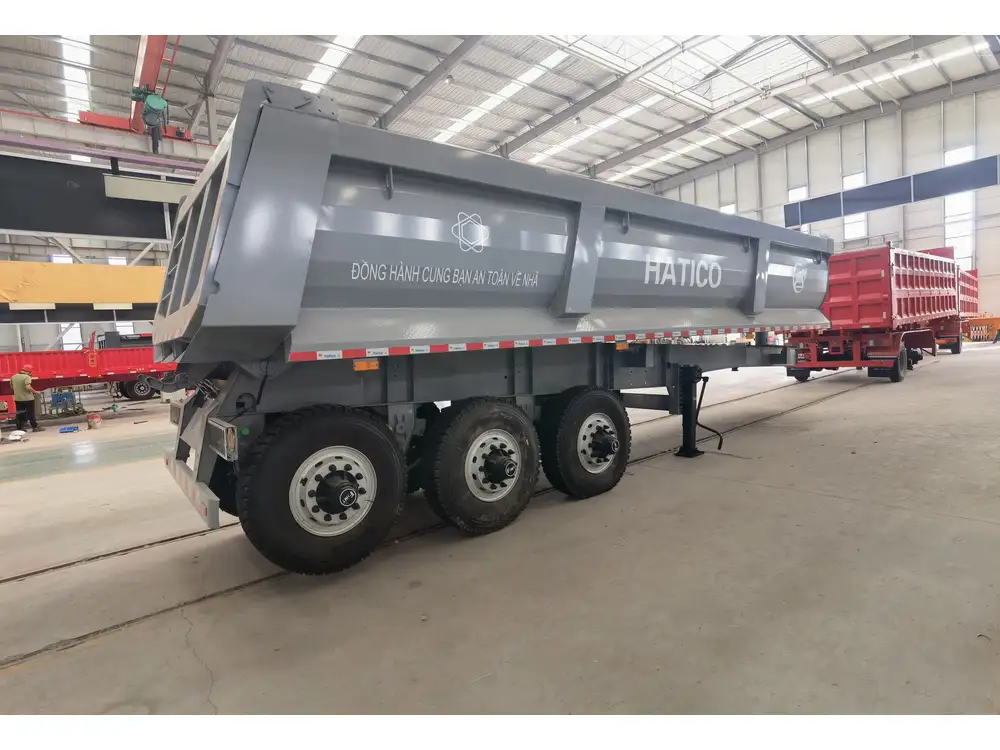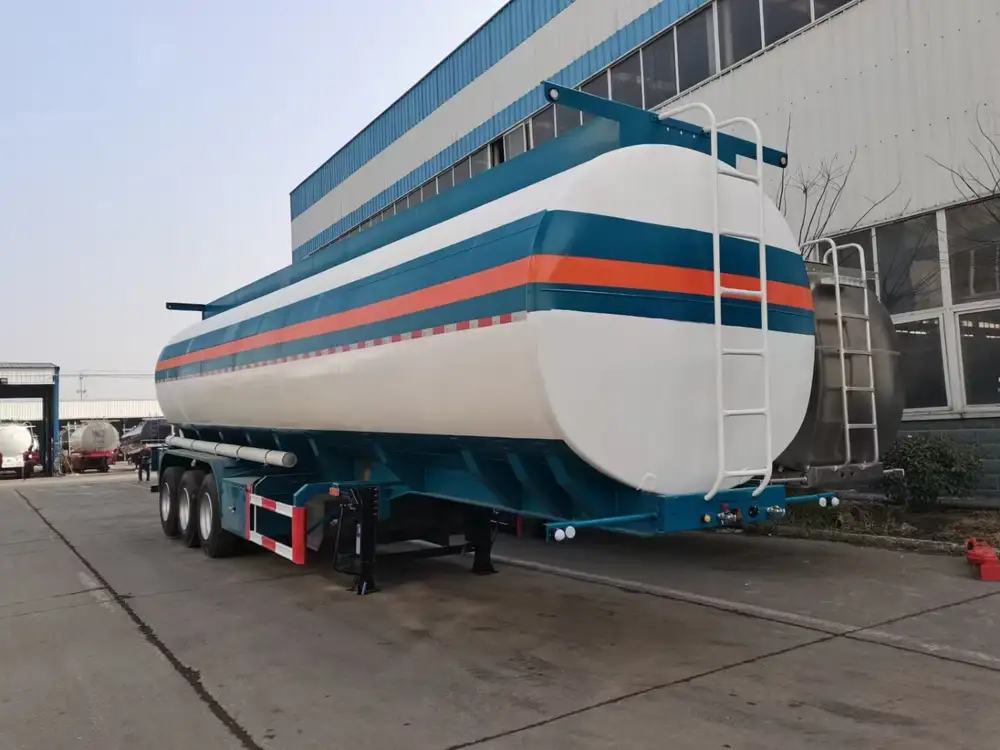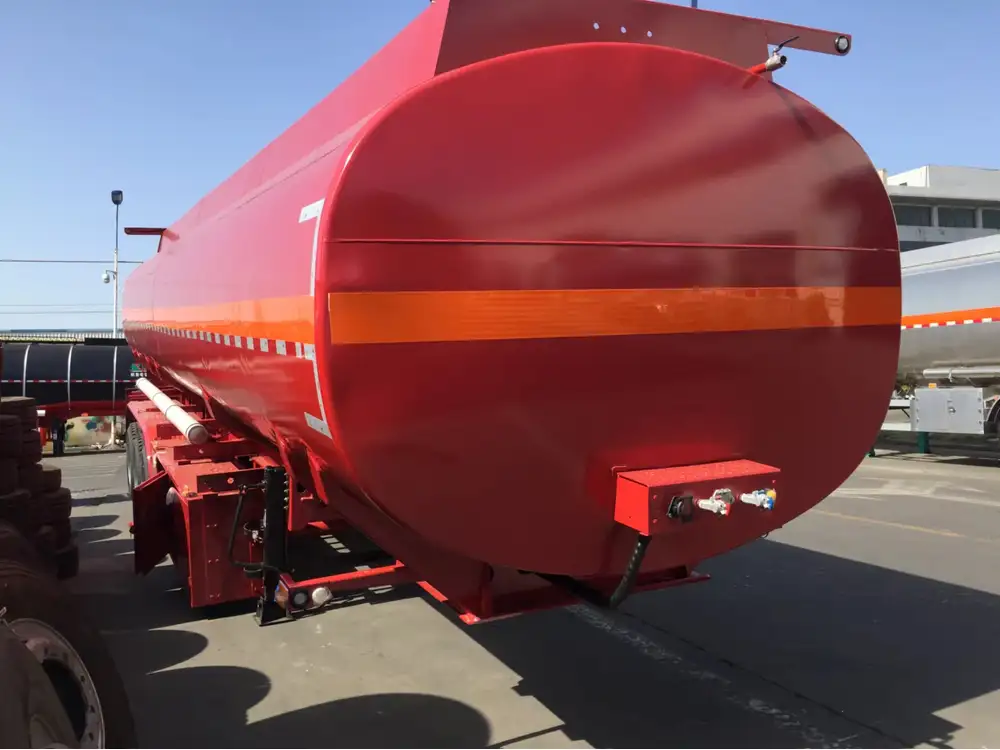When it comes to the transportation industry, knowledge about the weight of semi-trailers is crucial. Understanding how much a 28-foot semi-trailer weighs is not just a matter of curiosity; it directly impacts load calculations, compliance with regulations, and overall logistics efficiency.
What is a Semi-Trailer?
A semi-trailer is a trailer that is designed to be towed by a truck or tractor unit. Unlike a full trailer, a semi-trailer’s weight is partially supported by the towing vehicle. This unique structure allows semi-trailers to carry heavy loads while maintaining stability and safety during transit.
Key Components of a Semi-Trailer
- Chassis: The framework of the semi-trailer, which supports the load.
- Axles: Typically, 2 to 3 axles are used, significantly influencing the weight distribution.
- Suspension System: This system provides comfort and stability, absorbing shocks from the road.
- Decking: The surface area where goods are loaded, available in various materials such as wood or metal.
- Fenders: Protect the tires and prevent debris from being thrown at other vehicles.

Weight Specifications of a 28-Foot Semi-Trailer
The weight of a 28-foot semi-trailer can fluctuate based on several factors, including construction materials, design, and configuration. Generally, the weight range for this type of trailer is as follows:
| Type of Semi-Trailer | Average Weight (Empty) | Load Capacity (Max) | Total Weight (Max) |
|---|---|---|---|
| Standard Trailer | 5,000 – 6,500 lbs | Up to 26,000 lbs | Up to 31,000 lbs |
| Refrigerated Trailer | 7,000 – 8,500 lbs | Up to 20,000 lbs | Up to 28,500 lbs |
| Flatbed Trailer | 4,000 – 6,000 lbs | Up to 28,000 lbs | Up to 34,000 lbs |
Factors Influencing the Weight of a 28-Foot Semi-Trailer
Material Composition:
- Steel and aluminum are popular materials, influencing weight significantly. Aluminum trailers tend to be lighter but may also be less durable than their steel counterparts.
Type of Trailer:
- Different designs, such as refrigerated or flatbed, utilize various materials and structural configurations, influencing empty weight.
Features and Add-Ons:
- Additional components like lift gates, storage compartments, and advanced braking systems can add to the weight.
The Mechanics of Weight Distribution
Understanding how weight is distributed across a 28-foot semi-trailer is essential for safe hauling. Proper load distribution ensures that the trailer remains stable and prevents accidents on the road.

Visualizing Weight Distribution
- Front Axle: Ideally, 10-15% of the total weight should rest on the front axle of the towing truck for optimal steering and control.
- Trailers with More Than One Axle: Distribution may vary, with subsequent axles carrying a larger share of the trailer’s weight.
Importance of Adequate Weight Distribution
| Consequences of Poor Distribution | Outcome |
|---|---|
| Excessive Weight on One Side | Risk of rollovers |
| Insufficient Weight on Front Axle | Poor steering control |
| Overloading** | Legal penalties & fines |
Calculating the Total Weight Capacity
In application, the total weight capacity includes the weight of the empty trailer plus the cargo weight. Here’s a formula to ascertain the safe hauling capacity:

Weight Capacity Formula
[ \text{Total Weight Capacity} = \text{Empty Weight of Trailer} + \text{Cargo Weight} ]Example Calculation
- Empty Weight of Trailer: 6,000 lbs
- Max Cargo Load: 20,000 lbs
- Total Weight Capacity: [ 6,000 \text{ lbs} + 20,000 \text{ lbs} = 26,000 \text{ lbs} ]
This example showcases the importance of both the empty weight of the trailer and the weight of the cargo being transported.
Regulations and Compliance
Navigating the regulation landscape is imperative for semi-trailer operations. Each region imposes specific weight limits on vehicles traveling on public roads. Failure to adhere to these regulations can result in significant penalties.

National and State Regulations
- Federal Limitations: In the U.S., the Federal Bridge Formula stipulates maximum load limits based on axle spacing and number of axles.
- State Regulations: States might have their limitations, particularly for intra-state transport.
Ensuring Compliance
- Weight Checks: Utilize weigh stations to ensure loads comply with legal limitations.
- Regular Maintenance: Regular checks on weight distribution and tire pressure can prevent legal issues and enhance safety.
Comparative Benefits of 28-Foot Semi-Trailers
Often, businesses may grapple with the decision to opt for a 28-foot semi-trailer versus other sizes or configurations. Below is a comparison to help in this decision-making process.
| Aspect | 28-Foot Semi-Trailer | 30-Foot Semi-Trailer | 20-Foot Semi-Trailer |
|---|---|---|---|
| Weight | Moderate | Heavier | Lighter |
| Cargo Capacity | Moderate | Higher | Lower |
| Maneuverability | Good | Fair | Excellent |
| Use Case | Regional deliveries | Long-haul transport | Urban deliveries |

Analyzing Use Cases
Regional Deliveries: A 28-foot semi-trailer is versatile enough to manage both deliveries and pickup in urban areas while maintaining a good load capacity.
Long-Haul Transport: For long-distance shipments, a 30-foot trailer may accommodate more cargo, albeit with weight compliances to consider.
Urban Deliveries: A 20-foot trailer offers excellent maneuverability and is perfect for tight city streets and neighborhoods.
Common Questions and Concerns
Understanding the weight of a 28-foot semi-trailer naturally raises several questions that stakeholders might consider.
How Can You Optimize Weight Management?
Utilize Lightweight Materials: Consider aluminum for trailer construction to minimize empty weight.
Track Vehicle Maintenance: Regularly check for tire wear, brake systems, and load balance.
Load Management Software: Investing in technology that tracks weight distribution can optimize performance and regulation adherence.

What are the Risks of Overloading?
- Legal Penalties: Hefty fines and potential impoundment may occur if overloading is detected.
- Safety Hazards: Overweight trailers may lead to brake failure and significantly compromised vehicle stability.
How Do Weather Conditions Affect Weight Transportation?
Adverse weather conditions can alter road safety and load management:
- Rain and Snow: Reduced traction increases the risk and could lead to accidents if the trailer is overloaded.
- Wind Force: A light-loaded trailer can be more susceptible to high winds, compromising stability.
Best Practices for Weighing Trailers
- Pre-Trip Weighing: Weigh trailers before loading at certified weigh stations.
- Multiple Weighing: Weigh separately at different stages – before and after loading.
- Regular Monitoring: Keep records of weights to ensure consistent compliance with regulations.

Conclusion
Determining how much a 28-foot semi-trailer weighs is paramount for effective transport logistics. By understanding the implications of weight, manufacturers and operators can optimize trailer design, ensure regulatory compliance, and maintain safety on the roads. With proper load calculation and adherence to regulations, the transportation industry can operate more efficiently. Investing in technology and regular maintenance will further bolster operational success, allowing operators to focus on their core business while ensuring safety and compliance remain a priority.



